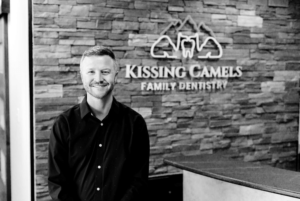
Benefits of Visiting Your Colorado Springs Dentist
Ever wonder why your dentist in Colorado Springs, CO insists on frequent checkups? It’s not just a matter of brushing your teeth and giving you tips on how to keep your pearly whites. Oral hygiene affects the health of the body. Your dentist will not only treat your toothaches and cavities but also identifies any risk factors that could contribute to more severe conditions. That’s why the American Dental Association suggests that your dentist change the duration of your appointments. Brushing and flossing alone will not help you achieve good oral health. It’s crucial to have an expert look at your mouth. Here are some of the advantages of visiting your Colorado Springs, CO dentist.
What to Expect During Your Visit with Dr. Boals
Your Colorado Springs dentist may examine your face, neck, lymph nodes, and jaw before examining your teeth. This protocol is to scan for any odd lumps and bumps and to check your thyroid. What the dentist really is looking for are symptoms of head, neck, and oral cancer, diabetes, and vitamin deficiency. If your Colorado Springs dentist notices something troubling, you can guarantee that your dentist will recommend the next steps.
A full-mouth examination of the condition of your teeth and gums lets your dentist decide the best way to improve your oral health long-term.
When your dentist looks into your mouth, they do a variety of different things:
- Analysis of the gums for any signs of disease
- Checks for missing or broken teeth and signs of tooth decay
- Inspects the tissue inside your mouth
- Takes a look at your tongue
- Checks your bite
- Reviews fillings or potential dental problems
Dentists in Colorado Springs, CO, have the equipment and experience to thoroughly examine and treat any dental problem that arises. If you don’t see your dentist when an issue arrises, you won’t know how to fix it.
Did You Miss a Spot?
No matter how good you brush and floss, you will not be able to remove tartar on your own. Don’t worry, it’s normal. During your visit to Kissing Camels Family Dentistry, one of our hygienists will clear up anything you’ve missed. Making your teeth look as good as new. Professional dental cleanings are necessary to decrease the risk of cavities, bacteria, and gum disease.
These professional cleanings include a visual inspection of your teeth and the removal of any tartar build-up. It is accompanied by polishing and probably flossing. After that, Dr. Boals will speak with you about the health of your teeth and gums. They will also make suggestions for improving your oral health or address any concerns that he has. Following this advice, you’ll set up your next dental cleaning t the front desk.
Dental Problems That Go Unnoticed
Waiting until you have a toothache to see your emergency dentist in Colorado Springs, CO, can be troublesome and expensive. Cavities can begin to develop without causing discomfort, and dentists can diagnose them until they become a major problem. The sooner a cavity is detected, the less likely a major surgery, such as a root canal, is to be performed.
Gum disease is another painless disorder. It’s a big cause of loss of teeth. A lot of people don’t even know they have it. If the gum disease is detected soon enough, it is reversible. Early-stage gum disease, known as gingivitis, can be avoided by skilled cleaning followed by good oral hygiene at home. Advanced gum disease, also known as periodontitis, can lead to tissue and bone loss that support the teeth. Periodontitis affects 47.2% of adults over 30 years of age in the United States.
Dental problems may arise without warning signs, which is why it’s crucial to follow a good oral health regimen and see your dentist regularly. This will save you both money and time in the long run.
Why You Need Good Oral Health
We put a lot of stuff into our mouths in our bodies. It makes sense that our teeth should be in good order, doesn’t it? Healthy teeth allow us to eat the food we want while reducing the number of harmful bacteria we swallow. Don’t forget to give us a whiter smile. Polishing during washing removes all stains and improves the enamel teeth. Enamel is a thin layer of coating that coats every tooth. It helps protect against chewing, biting, and grinding damage. Enamel can be eroded by contact with acids, such as those present in soft drinks and fruit drinks. This can lead to sensitive teeth, discoloration, and indentations. It can also make teeth easier to break and chip. Dr. Kim, an emergency dentist in Lexington, KY, agrees that erosion of the enamel makes the teeth more vulnerable to cavities and decay. Going to regular dental cleanings can help make sure your enamel remains intact, and you can enjoy the use of your teeth.
Visit Kissing Camels Family Dentistry
It’s not just a matter of keeping your teeth clean or a whiter smile. A regular checkup at our dental office in Colorado Springs, CO, will help you live a healthier life and worry less about dental, neck, and head ailments.
Regular visits to the dentist are to help avoid major medical complications and save you money in the future. If you missed your last appointment or need to find a new dentist in Colorado Springs, CO, don’t hesitate to contact Kissing Camels Family Dentistry.












